In popular opinion, it seems to have become a common fact that it was Bruce Lee that led to the kung fu movie becoming a massive hit in the US, with his 1973 movie Enter the Dragon. While its influence can’t be doubted, what is often overlooked is that there was a movie released a full year before in 1972 which had already captured the publics’ imagination, filling out grind-house cinemas around the country, and that was King Boxer, or as it was re-titled for its US release, Five Fingers of Death.
Made by the mighty Shaw Brothers studios, even today it’s easy to see why it was a hit, with liberal use of fake blood, eye gauging, head splitting karate chops, beheadings, and people being smashed through tables what seems like every few minutes, it spoke the universal language of action. However far from being made by a Chinese director, the man behind the movie was actually a Korean by the name of Cheng Chang-ho. Having worked in the Korean movie industry since 1951, in the late 1960s he began collaborating with studios in Hong Kong, before in 1968 he was signed up by the Shaw Brothers.
He stayed in Hong Kong for 5 years, and on top of King Boxer went on to direct well respected kung-fu classics like Broken Oath (1977), to what many people describe as “the first kung-fu soft-core porn” with The Association (1975). Meanwhile during the same period Korea itself was producing a steady stream of its own kung-fu movies. While most were aimed at the Chinese market, some of them did manage to retain a distinctly Korean flavour, such as Black Dragon River (aka Martial Mates) (1976), which tells the story of a Korean martial arts school defending itself against the Japanese. This movie in particular stars three Korean performers who within a couple of years would be household names in the Hong Kong movie scene – Hwang Jang-lee, Casanova Wong and Elton Chong.
Another star of the time was Hwang In-shik, a Hapkido grandmaster who was visited in Seoul by Hong Kong film-maker Huang Feng in 1972. Feng brought along with him rising stars Sammo Hung, Angela Mao, and a young Jackie Chan to train in the art of Hapkido, and he ended up being so impressed with In-shik’s ability that he invited him to come to Hong Kong and star in a movie based around the art itself. Now, Hapkido (aka Lady Kung-fu) (1972) is considered a classic of the genre, and essentially has In-shik playing himself. He went on to star in a number of Hong Kong movies (including The Association!), and had been in discussions with Bruce Lee to play an opponent in what was to be Lee’s masterpiece, Game of Death (release posthumously in 1978), only for Lee to pass away later that same week.
In-shik went back to Korea and starred in a number of movies there, before immigrating to Canada with the purpose of opening up a Hapkido school, which he successfully did. It wasn’t until the early 1980s that, having received a beating from Hwang Jang-lee in his first couple of breakout movies, Jackie Chan contacted In-shik to try and coax him out of retirement, with the intent of him playing Chan’s main opponent in the stars first couple of self-directed outings, The Young Master (1980) and Dragon Lord (1982). Chan must have been convincing, as In-shik agreed, and the fifteen minute long fight between him & Chan that closes out The Young Master is considered one of the best fights ever filmed.
On the subject of Bruce Lee, his passing left a huge void in the kung-fu movie world, of which the movie making industry attempted to fill by finding Bruce Lee look-alikes, and carried on making movies while attempting to pass them off as the real deal. Hence the era of ‘Bruceploitation’ was born. There Was Bruce Li, Bruce Le, Bruce Liang, Bruce Ly, Bruce Lei, and the list goes on, even Jackie Chan was originally attempted to be cast in the mould of a Bruce clone. Korea threw their hat into the ring with Dragon Lee, arguably one of the worse Bruce Lee imitators based on the fact that his build was completely different to that of Bruce, being quite stocky and muscular. Nevertheless, Dragon Lee seemed on a mission to overcompensate for his lack of physical resemblance by aping Bruce Lee’s mannerisms with great exaggeration, usually howling and enthusiastically shaking his head from side to side in every movie he was in.
Korea even attempted to make their own Bruceploitation movie, with Bruce Lee Fights Back from the Grave (1976). Bizarrely, this isn’t really a Bruceploitation movie at all, but the tale of a man who travels to America to try and unravel the mystery of his brothers’ death. So what’s the connection to Bruce Lee? The movie opens with a shot of Bruce Lee’s grave, presumably filmed and tagged on to the existing movie, which is then hit by lightening, causing an unidentified Bruce Lee look-alike to spring out of the ground alive and well, cue the titles. Yes, that’s it.
In 1978, when American director Robert Clouse decided to try and finish Bruce Lee’s last movie, Game of Death, by using the footage already filmed and creating a new storyline to Lee’s original version, it was Korean martial artist Kim Tai-jung who was picked to be the Bruce Lee stand-in for the necessary additional scenes. While the finished movie is a mess, sometimes even using a cardboard cut out of Bruce Lee’s face superimposed onto an actor, Tai-jung’s skills were certainly recognized. So much so that in 1981, when the studio Golden Harvest decided to go ahead and make a sequel to Game of Death, entitled Tower of Death, they cast Tai-jung in the lead. Under the direction of Ng See Yuen, Tai-jung was pitted against fellow Korean super kicker Hwang Jang-lee, and today the movie is considered a camp classic of the genre.
By the mid 1980s Ng See Yuen was working as a producer with Seasonal Film Corporation, and they signed a deal to make a handful of Hong Kong / American co-productions. Two movies that came as a result of this deal were the Corey Yuen directed No Retreat, No Surrender (1985) and No Retreat, No Surrender 2: Raging Thunder (1989). These movies came to represent the end of an era for the Korean influence in kung-fu movies.
In No Retreat, No Surrender, actor Kurt McKinney plays a teenager who’s family relocates to Seattle, after a bunch of karate fighting gangsters drive them out of their home town. Unable to fit in and with a father who disapproves of his obsession with all things Bruce Lee (including speaking to Bruce at his grave!), McKinney almost has a hilariously acted mental breakdown, only to be visited by the ghost of Bruce Lee. The ghost is played by Tai-jung, and would mark his final film role before he returned to Korea and became a businessman. What was the end for Tai-jung, was the start for a certain Jean Claude Van-Damme, as the movie marks the debut of the Muscles from Brussels, playing the evil Russian out to take over all the karate dojos in America. Tai-jung teaches McKinney how to defeat Van Damme, and the stage is set for a final showdown in the ring.
Both McKinney and Van Damme signed a three picture deal, but after the first movie Van Damme decided to break his contract, and convinced McKinney to do the same, which lead to them rather ungraciously not showing up on the first day of filming for the second installment. Loren Avendon took over in the role McKinney was supposed to play, and Matthias Hues fills in for Van Damme. The story is actually unrelated to the original, this time revolving around the hunt to find the kidnapped Thai finance of Avendon’s character in the jungle of Thailand and Cambodia, while fighting against a Vietcong terrorist group. The leader of the Vietcong is none other than Hwang Jang-lee, but in the movie he’s given little to do, with his one brief fight scene against Cynthia Rothrock having him being embarrassingly kicked around. 1989 would mark Jang-lee’s last year working in the Hong Kong movie industry, before he too moved back to Korea.
While Korea’s influence on the kung-fu movie scene of old is undeniable, even today there still seems to be a place for Korean talent in crossover productions. Most recently Jeong Woo-seong starred in the John Woo directed Reign of Assassins (2010), Jang Dong-gun in Dangerous Liaisons (2012), and Kwon Sang-woo featured in Jackie Chan’s last action hurrah, CZ12: Chinese Zodiac (2012). While the Korean Wave is clearly still going very strong, perhaps it’s not so well known just quite how long it’s been going for.

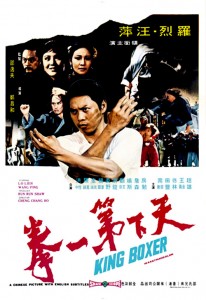
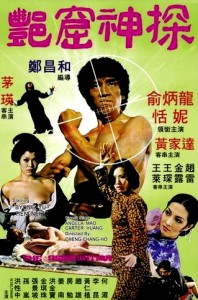
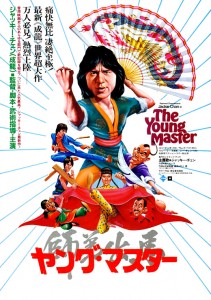
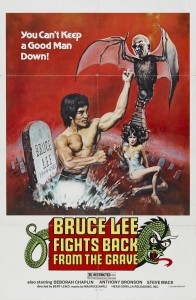
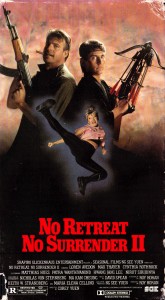
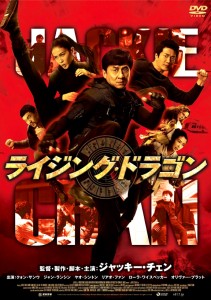


The connection between Korean and old school kung fu is a lot more noteworthy than meets the eye. Your piece is definitely a reminder of that! There is a rumor that “Bruce Lee Fights Back from the Grave” was actually directed by Italian cult-filmmaker Umberto Lenzi (he may have just directed by the the trailer, where Bruce literally pops out of his grave. lol).
Nice article. There is certainly a link that is not always talked about. I was thinking that like Taiwan at the time (another important sometimes ignored and/or confused region in dealing with writings about Hong Kong cinema) South Korea was a good spot to get a film done cheaply. I believe that was at least one reason The Killer Meteors and To Kill with Intrigue were filmed there.
After watching several Angela Mao films recently, for me it seems that Hapkido works well within the basher style of HK action cinema.
Quick note: Reign of Assassins was not directed by John Woo (he did do one scene apparently), but directed by Su Chao-Pin.
Umberto Lenzi had nothing to do with Bruce Lee Fights Back From The Grave – aside from the US poster crediting one “Bert Lenzi”. The film itself was directed by Korean Doo Yong Lee.
That’s right…the film is actually a Korean-U.S. production that is originally entitled something like “Stranger in America”. The film’s director, Lee Doo-Yong, would reunite with the lead actor, credited here are Bruce K.L. Lea, but is actually Tae Kwon Do grandmaster Jun Chong, for Chong’s 1988 action film Silent Assassins, co-starring Sam J. Jones, Linda Blair, and the Rhee Brothers (Phillip and Simon).